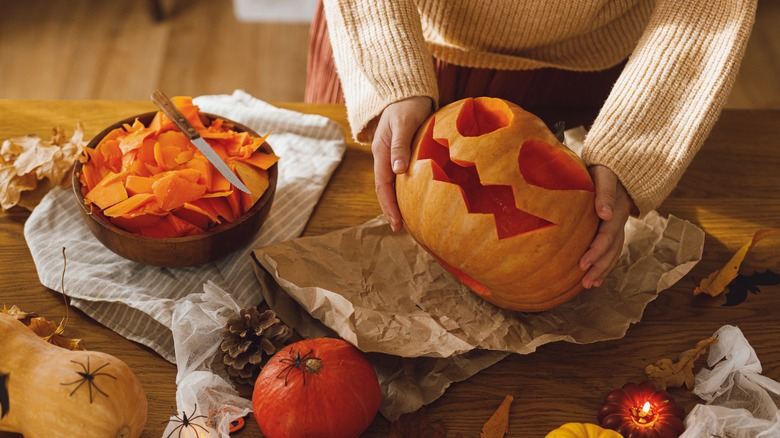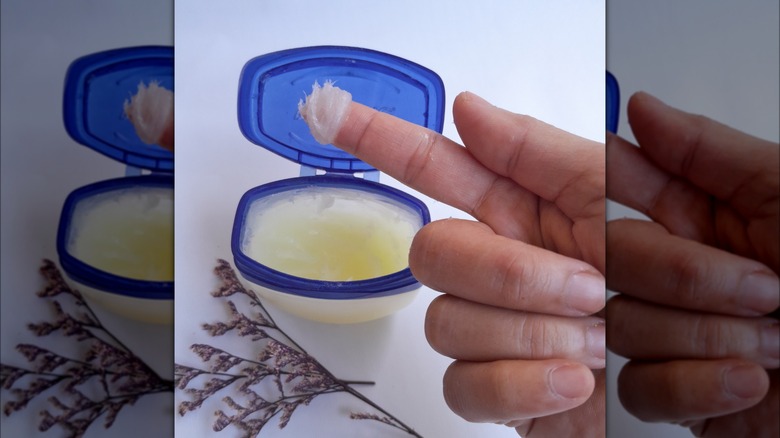What You Should Know When Preserving Your Carved Pumpkin With Vinegar
One of the things to look forward to in the fall is the return of pumpkins, from pumpkin spice lattes and pumpkin desserts to pumpkin decorations. Decorating with pumpkins is especially fun because it gives the family many activities to do together. You can carve, paint, or even DIY cute crochet pumpkins and display them around the house. When working with pumpkins (at least the real ones), there are steps to take to preserve them so they don't decay quickly. A vinegar or bleach soak is the popular route, but we've found that adding petroleum jelly can also help.
There are other practices that influence the shelf (or porch) life of pumpkins. If you're growing them yourself, one tip for harvesting pumpkins is to cure them so their skin is hard and healthy. It will help them last longer. When they're ready for display, avoid leaving them out in the direct sun and opt for cool and shaded spots instead. And when they aren't on display, keep them refrigerated in plastic bags if possible.
Add petroleum jelly to the care routine
Normally, you would dump a dry, freshly-carved pumpkin into a container of vinegar or bleach, or just wipe the pumpkin down with a 1:1 vinegar-water mix. This kills the mold spores that would later on grow and cause the pumpkin to decay. We suggest adding another step to this routine, however, and that is rubbing some petroleum jelly on the cut parts. It will also help prolong the life of the pumpkin because it creates a barrier on the open skin to lock in the moisture.
Something to note with this hack is that petroleum jelly is flammable so you can't use real lights or flames with it. So if you're making some jack o'lanterns, opt for other lights for your safety. Some ideas to consider are battery-operated tea lights and glow sticks. Ready to get started? Check out this list of 21 creative carving ideas for your Halloween pumpkins.

